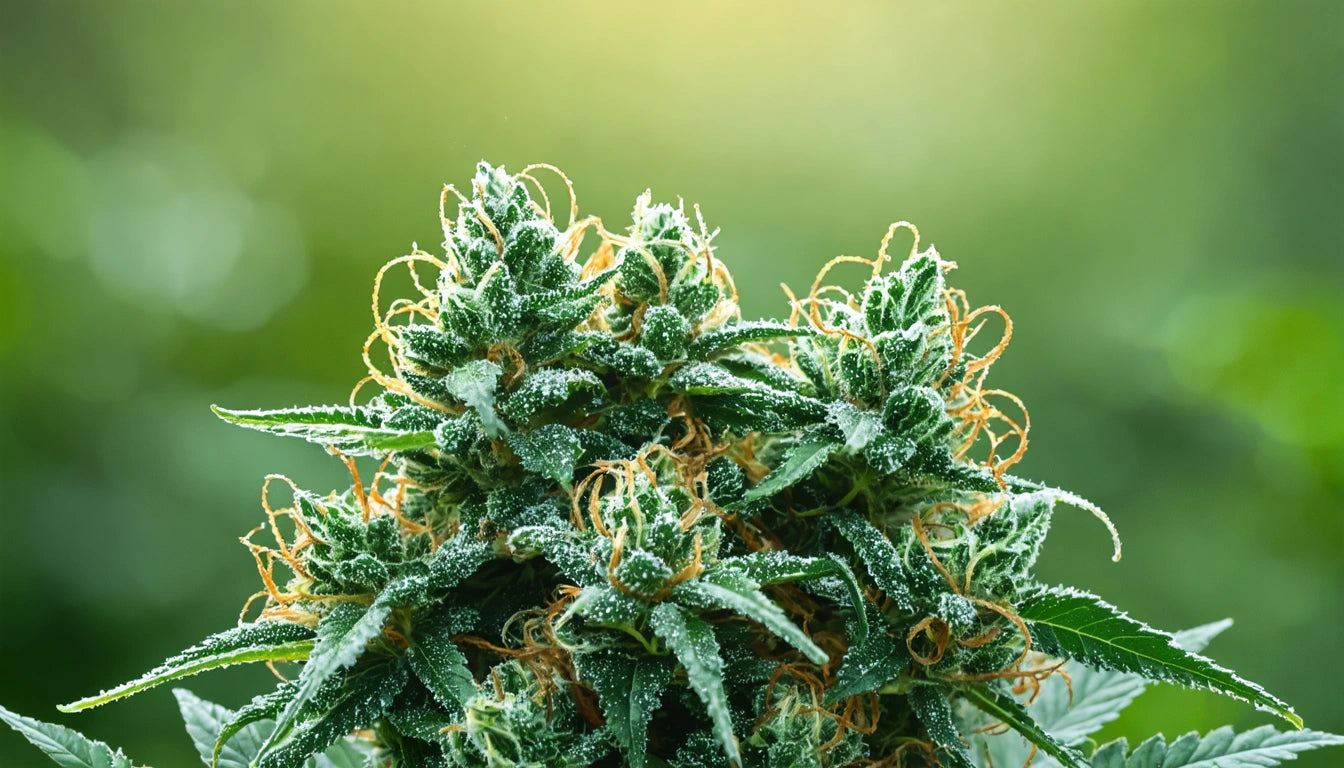Table of Contents
- What Is Bud Rot: Understanding the Fungal Threat
- What Causes Bud Rot in Cannabis Plants
- How to Identify Bud Rot: Visual and Olfactory Signs
- How to Prevent Bud Rot: Essential Cultivation Practices
- How to Prevent Bud Rot Outdoors: Special Considerations
- Treatment Options: What to Do With Bud Rot
- Health Risks: Can You Smoke Bud Rot?
- Post-Harvest Management and Long-Term Protection
Understanding and Managing Bud Rot: Causes, Prevention, and Treatment
Bud rot represents one of the most devastating challenges for cannabis cultivators. This fungal infection can destroy an entire harvest quickly if not identified and addressed promptly. Understanding what bud rot is, recognizing its early signs, and implementing preventative measures are crucial skills for any grower looking to protect their investment and ensure a quality harvest.
What Is Bud Rot: Understanding the Fungal Threat
Bud rot, scientifically known as Botrytis cinerea, is a gray mold that attacks cannabis flowers, particularly during the flowering stage. Unlike surface molds that might appear on leaves, bud rot differs from other cannabis molds by developing inside the densest parts of the buds and working its way outward. This makes early detection challenging, as symptoms often remain hidden until significant damage has occurred.
What Causes Bud Rot in Cannabis Plants
Several environmental and cultivation factors contribute to the development of bud rot:
- High humidity levels (above 60% during flowering)
- Poor air circulation around and within the canopy
- Excessive moisture on buds from rain, dew, or overwatering
- Dense, compact bud structures that trap moisture
- Overcrowded plants limiting airflow
- Temperature fluctuations causing condensation
- Physical damage to buds creating entry points for spores
The fungus thrives in humid conditions with limited airflow, making the dense structure of cannabis flowers particularly vulnerable during the late flowering stage when buds are at their largest and most compact.
Understanding what causes bud rot is the first step toward implementing effective prevention strategies. The fungus requires specific conditions to thrive, which can be mitigated through proper cultivation practices.
How to Identify Bud Rot: Visual and Olfactory Signs
What Does Bud Rot Look Like?
Early visual identification is crucial for containing the spread of bud rot. Here's what to look for:
- Initial signs include yellowing or browning of leaves attached directly to buds
- Affected buds turn brown, gray, or black from the inside out
- White, fluffy mold may be visible when buds are gently pulled apart
- Advanced cases show gray-brown dusty spores
- Infected buds become mushy and easily crumble when touched
- Discoloration often starts at the stem connection point
What Does Bud Rot Smell Like?
The olfactory signs of bud rot are equally important for early detection:
- Musty, damp basement smell
- Sweet, decaying fruit odor
- Loss of the cannabis's natural terpene profile
- Mildew-like scent, particularly when buds are broken open
Regular inspection of your plants, especially during the flowering stage and in the dense inner portions of buds, is essential for catching bud rot before it spreads throughout your garden.
How to Prevent Bud Rot: Essential Cultivation Practices
Prevention is far more effective than treatment when it comes to bud rot. Implementing these strategies can significantly reduce your risk:
- Maintain humidity below 50% during flowering
- Ensure proper air circulation with fans and adequate spacing between plants
- Prune lower and inner foliage to improve airflow through the canopy
- Water at soil level to keep foliage and buds dry
- Schedule watering early in the day so plants dry before nightfall
- Consider dehumidifiers in indoor grows during flowering
- Implement preventative organic fungicides during early flowering
Understanding the cannabis flowering process helps growers anticipate when plants are most vulnerable to bud rot and adjust their care routines accordingly.
How to Prevent Bud Rot Outdoors: Special Considerations
Outdoor growers face additional challenges in preventing bud rot due to unpredictable weather conditions:
- Select naturally mold-resistant strains for outdoor growing
- Position plants where they receive morning sun to dry overnight dew quickly
- Install temporary rain shelters during wet flowering periods
- Shake plants gently after rainfall to remove water droplets from buds
- Consider earlier harvesting if extended rainy periods are forecast
- Space plants adequately to allow natural airflow between them
- Avoid low-lying areas where humidity tends to be higher
Many outdoor growers have found success with specialized growing techniques that focus on creating optimal environmental conditions even in challenging outdoor settings.
Treatment Options: What to Do With Bud Rot
If you discover bud rot in your garden, immediate action is necessary:
- Remove and destroy all infected buds immediately
- Cut at least one inch beyond visible infection
- Use sterilized tools and clean them between cuts
- Dispose of infected material away from your garden
- Reduce humidity and increase air circulation immediately
- Consider applying approved organic fungicides to remaining healthy plants
- Monitor remaining plants closely for new infections
Unfortunately, once bud rot takes hold, salvaging infected buds is rarely possible. The focus should be on preventing spread to healthy portions of your garden.
Health Risks: Can You Smoke Bud Rot?
The question "can you smoke bud rot" has a clear answer: absolutely not. Consuming moldy cannabis in any form poses serious health risks:
- Respiratory infections and complications
- Allergic reactions ranging from mild to severe
- Potential exposure to mycotoxins produced by fungi
- Particularly dangerous for immunocompromised individuals
Even if portions of a bud appear unaffected, microscopic spores may be present throughout. The safest approach is to discard any buds showing signs of mold or rot. For those interested in alternative consumption methods, exploring different cannabis consumption techniques may be helpful, but never with moldy material.
Post-Harvest Management and Long-Term Protection
Proper drying, curing, and storage are essential for preventing bud rot after harvest:
- Dry buds slowly in a controlled environment (60-65% humidity)
- Ensure adequate airflow during drying
- Cure in airtight containers, opening daily to release moisture
- Store in proper containers at appropriate humidity levels (58-62%)
- Use humidity packs to maintain optimal moisture levels
- Consider specialized protective packaging solutions that maintain freshness while preventing moisture buildup
Proper storage extends beyond preservation concerns. Responsible cannabis storage requires consideration for safety, particularly in households with children. Using containers with secure sealing mechanisms helps maintain optimal humidity while also addressing safety concerns.
By understanding what bud rot is, what causes it, and how to prevent it, cultivators can significantly reduce their risk of losing valuable harvests to this common but devastating fungal infection. With vigilant monitoring and proper environmental control, the threat of bud rot can be effectively managed throughout the growing cycle and beyond.











Leave a comment
All comments are moderated before being published.
This site is protected by hCaptcha and the hCaptcha Privacy Policy and Terms of Service apply.